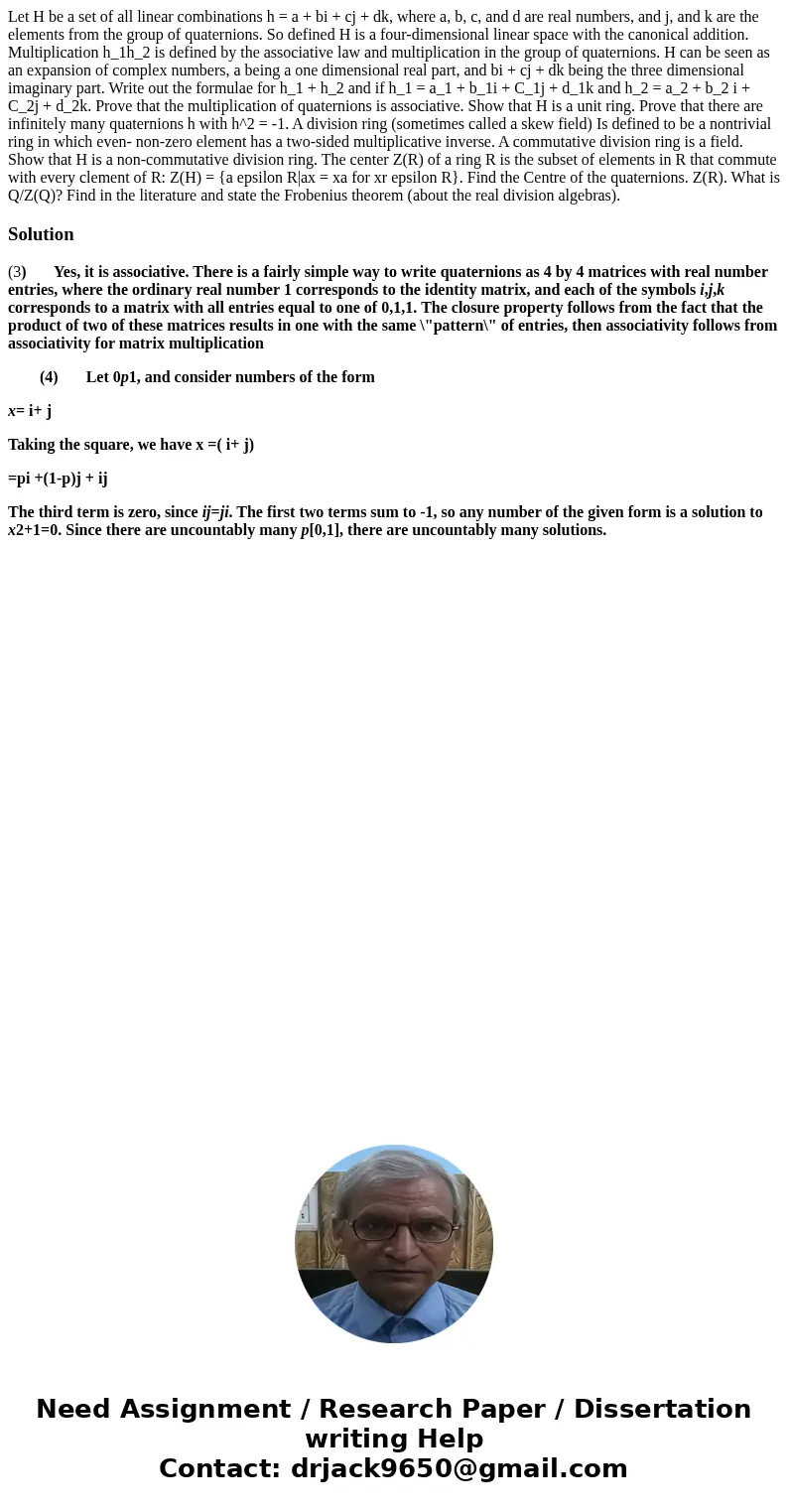Let H be a set of all linear combinations h = a + bi + cj + dk, where a, b, c, and d are real numbers, and j, and k are the elements from the group of quaternions. So defined H is a four-dimensional linear space with the canonical addition. Multiplication h_1h_2 is defined by the associative law and multiplication in the group of quaternions. H can be seen as an expansion of complex numbers, a being a one dimensional real part, and bi + cj + dk being the three dimensional imaginary part. Write out the formulae for h_1 + h_2 and if h_1 = a_1 + b_1i + C_1j + d_1k and h_2 = a_2 + b_2 i + C_2j + d_2k. Prove that the multiplication of quaternions is associative. Show that H is a unit ring. Prove that there are infinitely many quaternions h with h^2 = -1. A division ring (sometimes called a skew field) Is defined to be a nontrivial ring in which even- non-zero element has a two-sided multiplicative inverse. A commutative division ring is a field. Show that H is a non-commutative division ring. The center Z(R) of a ring R is the subset of elements in R that commute with every clement of R: Z(H) = {a epsilon R|ax = xa for xr epsilon R}. Find the Centre of the quaternions. Z(R). What is Q/Z(Q)? Find in the literature and state the Frobenius theorem (about the real division algebras).
(3) Yes, it is associative. There is a fairly simple way to write quaternions as 4 by 4 matrices with real number entries, where the ordinary real number 1 corresponds to the identity matrix, and each of the symbols i,j,k corresponds to a matrix with all entries equal to one of 0,1,1. The closure property follows from the fact that the product of two of these matrices results in one with the same \"pattern\" of entries, then associativity follows from associativity for matrix multiplication
(4) Let 0p1, and consider numbers of the form
x= i+ j
Taking the square, we have x =( i+ j)
=pi +(1-p)j + ij
The third term is zero, since ij=ji. The first two terms sum to -1, so any number of the given form is a solution to x2+1=0. Since there are uncountably many p[0,1], there are uncountably many solutions.

 Homework Sourse
Homework Sourse